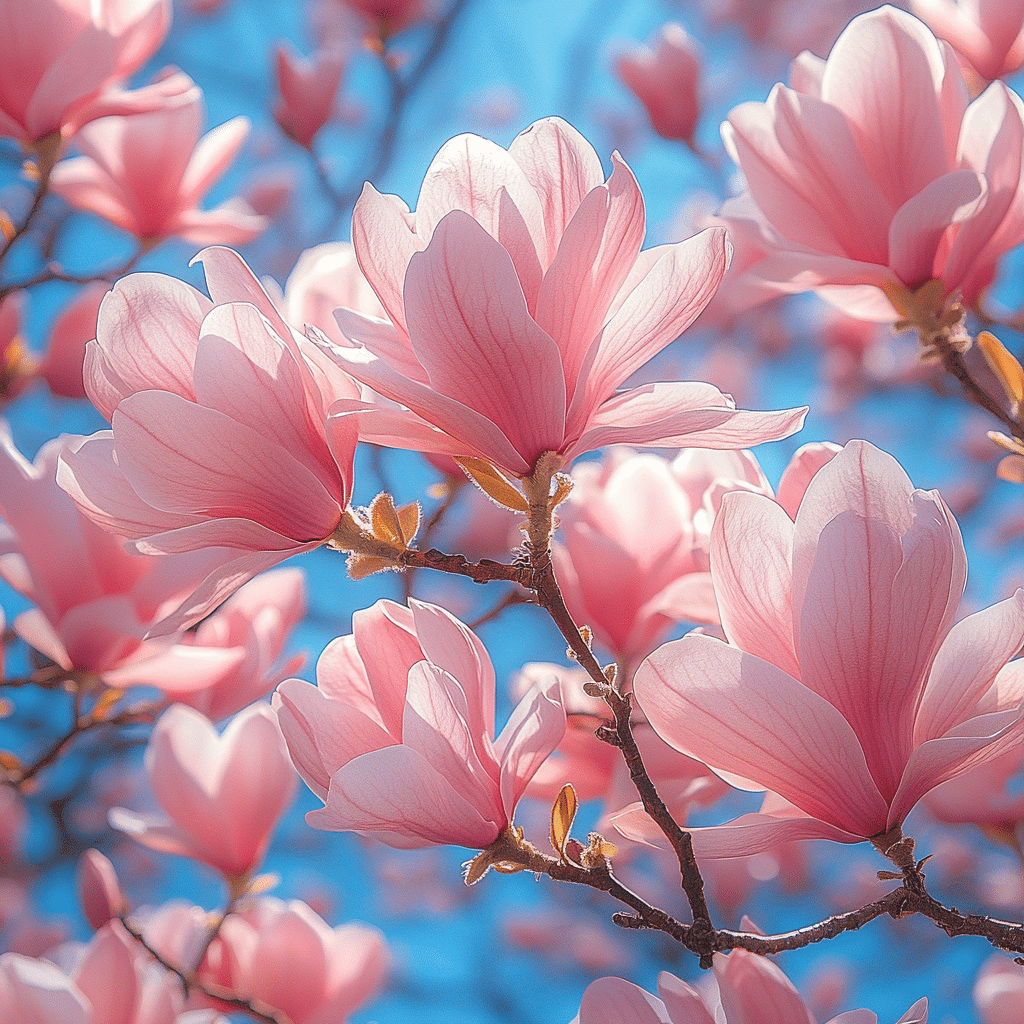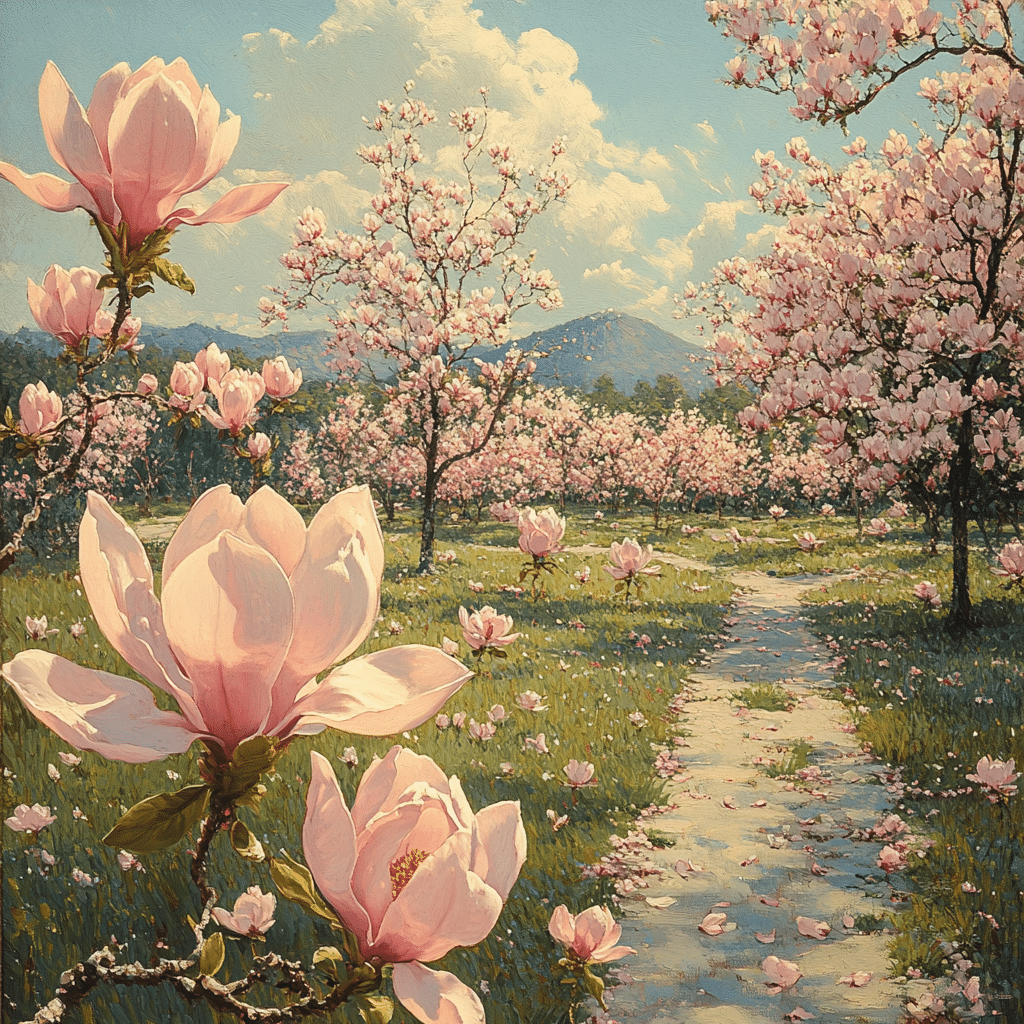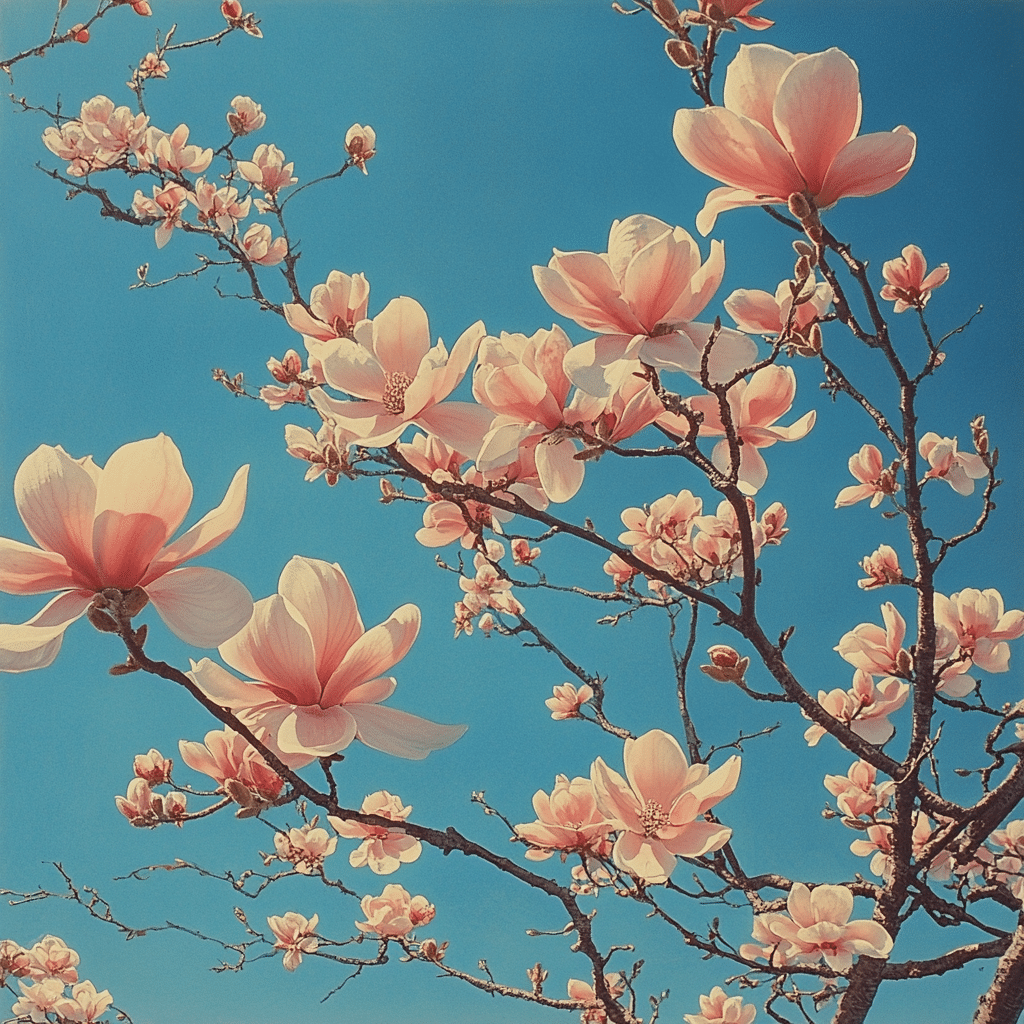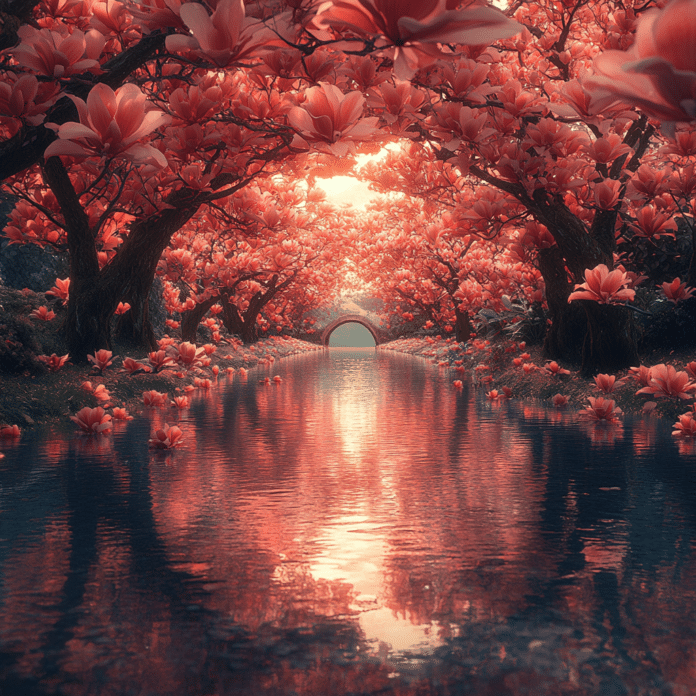1. Exploring the Magnificent World of Magnolia Trees
Magnolia trees are truly a sight to behold. Their blossoms burst forth in hues of white, pink, purple, and even yellow, creating a delightful spectacle that captivates onlookers. These trees, members of the Magnoliaceae family, thrive in different climates, from the southern states of the U.S. to parts of Asia and Europe. Often seen as a symbol of beauty and resilience, magnolia trees not only elevate landscapes but also evoke feelings of nostalgia, reminiscent of lazy spring afternoons.
Understanding magnolia trees goes beyond their picturesque blooms. They require specific growing conditions—well-drained soil and plenty of sunlight are essential for their growth. In urban settings, magnolias beautify city parks and residential gardens, while in rural areas, they often serve as focal points in expansive landscapes. Each tree has a story, playing a vital role in the environments where they flourish.
Moreover, magnolia trees resonate culturally in various communities. They symbolize dignity and nobility in many cultures, while in some regions, they serve as a rite of passage, marking significant life events like weddings and milestones. With such rich history and diverse role in human life, it’s no wonder magnolia trees are celebrated far and wide.

2. Top 5 Magnolia Trees to Enhance Your Garden Space
If you’re looking to add charm to your garden, here are five standout magnolia tree varieties that can transform your outdoor space:
Known for its big, fragrant white flowers and glossy green leaves, the Southern Magnolia is a popular choice. Its evergreen nature ensures beauty year-round, making it an excellent backdrop for any garden.
This compact tree dazzles with its star-shaped white flowers that bloom in early spring. Perfect for small gardens or urban balconies, it brings a fresh burst of beauty when the world is just waking up.
With enchanting pink and white blooms, the Saucer Magnolia is often a gardener’s favorite. It heralds the arrival of spring and fills outdoor spaces with a colorful display.
What sets this species apart is its vibrant yellow blooms. It adds a cheerful touch to gardens, standing out beautifully against the greens of spring and summer.
This award-winning variety showcases an impressive display of white flowers, creating a breathtaking sight. It’s a little piece of artistry in nature for any garden enthusiast.
Adding these magnolia trees enhances not just the visual appeal but provides a sense of place and memory, making our outdoor spaces feel alive and rich in character.
3. The Ecological Benefits of Planting Magnolia Trees
Magnolia trees bring more than just aesthetic pleasure; they’re crucial players in sustaining local ecosystems. These trees offer habitats to various wildlife, particularly pollinators like bees and birds, which are essential for plant reproduction. The large leaves and abundant blossoms provide crucial food sources, fostering a balanced environment.
In addition to supporting wildlife, magnolia trees contribute positively to air quality. Their ability to sequester carbon not only mitigates the effects of climate change but also promotes a healthier atmosphere for urban and suburban living. They act as natural air purifiers, absorbing toxins and releasing oxygen, which strengthens community health.
From an economic perspective, the hardwood of magnolia trees is frequently used in high-quality furniture making. The strength and beauty of magnolia wood make it a sought-after resource, demonstrating how these magnificent trees intertwine with both nature and industry.

4. The Role of Evergreen Shrubs in Enhancing Magnolia Landscapes
To achieve a harmonious garden, incorporating evergreen shrubs alongside magnolia trees is essential. Varieties such as Boxwood and Japanese Holly provide structure and greenery, complementing the seasonal blooms of magnolias. These shrubs maintain visual appeal throughout the year, even when magnolias are not in bloom.
Combining magnolia trees with evergreen shrubs also creates a favorable microclimate. The canopies of magnolias can shelter smaller plants from harsh winds, while the shrubs maintain moisture in the soil. This symbiotic relationship contributes to a healthier garden ecosystem.
Furthermore, the contrast between the colorful magnolia flowers and the deep greens of evergreen shrubs enhances the overall landscape design. Visitors can appreciate the artistic interplay of colors, textures, and shapes, making the garden a truly inviting space for relaxation and enjoyment.
5. Colorful Companions: Pairing Flowers with Magnolia Trees
While magnolia trees undoubtedly steal the show, pairing them with other flowering plants can create a vibrant tapestry in your garden. Consider these combinations to amplify your botanical aesthetic:
Embracing complementary plants not only enhances beauty but fosters diversity, encouraging pollinator habitats and a more active ecosystem.
6. Cultivating Careers: The Impact of Magnolia Trees on Olive Garden Careers
Interestingly, the cultivation of magnolia trees goes beyond gardening; it’s also ties into career opportunities. Take Olive Garden as a prime example. The restaurant chain emphasizes growth and sustainability, mirroring the flourishing presence of magnolia trees in their business model.
By integrating natural beauty, they create an inviting atmosphere that enhances the dining experience. The focus on lush landscapes, including magnolias, serves not just aesthetics, but contributes to a sense of well-being among employees and patrons alike. This synergy fosters an environment where career growth is nurtured—an opportunity for individuals to connect with nature in a professional setting.
Additionally, as the trend of urban greening spreads, restaurants are beginning to recognize the value of incorporating natural elements, leading to innovative job roles that revolve around landscape design, horticulture, and sustainability.
Innovative Wrap-Up: Embracing the Beauty and Benefits of Magnolia Trees
Ultimately, magnolia trees offer a glimpse into the exquisite beauty and complexity of nature. Their magnificent blossoms and ecological benefits make them a vital component in various ecosystems. By appreciating their role in gardening, promoting biodiversity, and even generating career opportunities, we can deepen our connections to the natural world.
So, as we admire these floral wonders, let’s commit to nurturing them for future generations. After all, there’s something timeless about magnolia trees—like a cherished memory, they remind us of the beauty that surrounds us, beckoning us to pause and reflect on life’s simple joys.
Magnolia Trees: Nature’s Stunning Floral Marvels
A Brief History and Enduring Beauty
Magnolia trees have been gracing our planet for around 20 million years, making them one of the oldest flowering plants. It’s no wonder they’ve charmed cultures across the globe. In fact, the grandeur of magnolia trees is often showcased in popular venues. For instance, at Westfield Century city, visitors might find themselves enveloped in their stunning blossoms while shopping or dining—a testament to the tree’s aesthetic power. Did you know that some species of magnolia can grow up to 100 feet tall? It’s true! These towering beauties truly make a statement.
Pollinators’ Delight
Interestingly enough, magnolias were around long before honeybees. Their blossoms are structured to attract beetles, which were among the first pollinators on the scene. This might seem a little peculiar, but this relationship has sustained the trees for millions of years. Just as folks stay tuned into updates like the latest on the Pioneer Woman divorce update, nature also keeps its own projects thriving. Magnolias have adapted exceptionally, showcasing their resilience in various settings.
Cultural References and Fun Facts
These majestic trees aren’t just a treat for the eyes; they also leave a mark in literature and film. Yorgos Lanthimos even captures these kinds of beauties in his cinematic masterpieces. You may also find inspiration in the versatility of magnolias, which can be spotted in many landscapes, from parks to gardens. As a random tidbit, a film that really captured a different kind of cinematic beauty is the 2k movie format that has become popular in recent years. It’s amazing how both magnolias and modern film can paint immersive worlds for us.
So, the next time you see a magnolia tree in full bloom, take a moment to appreciate not just its beauty, but also its place in our ecosystem and culture. With all these fun facets, it’s easy to see why magnolia trees continue to be celebrated across generations!




